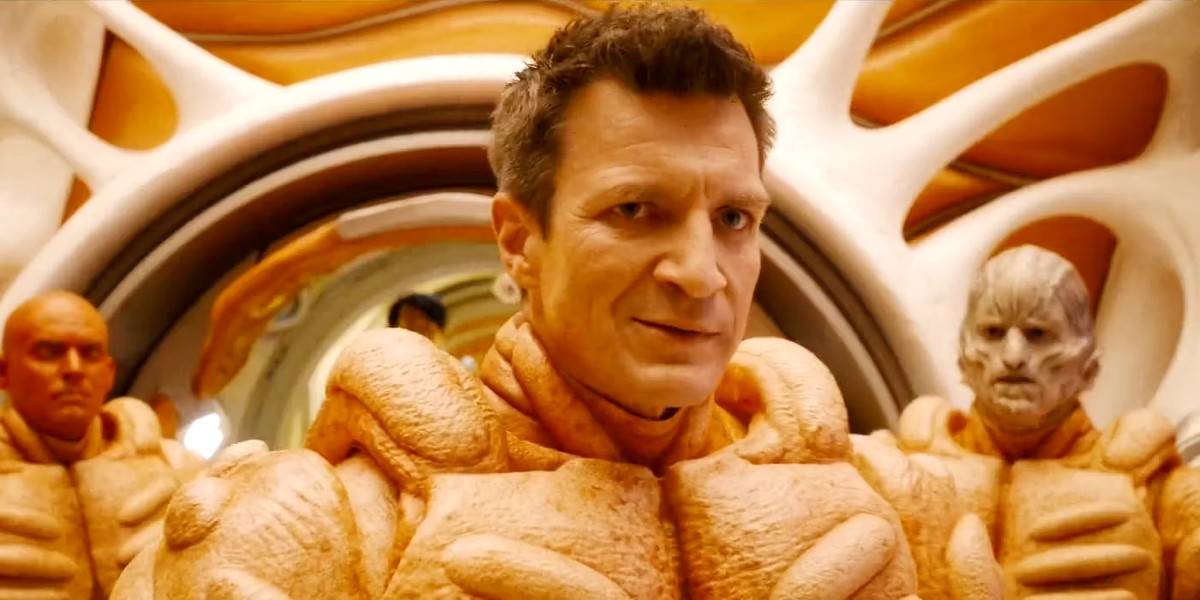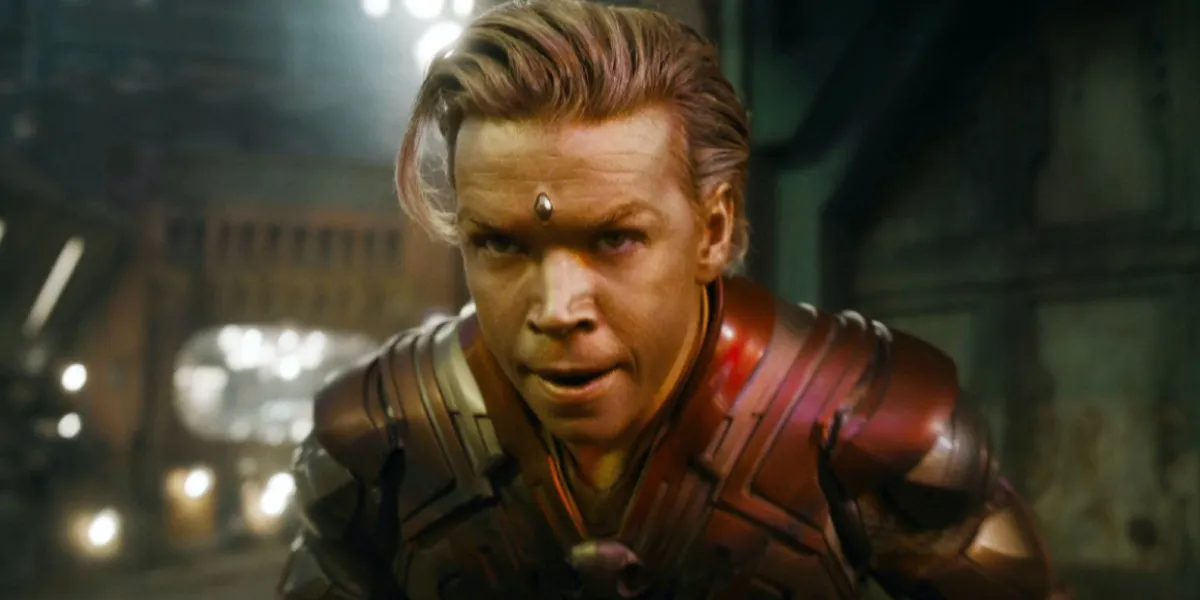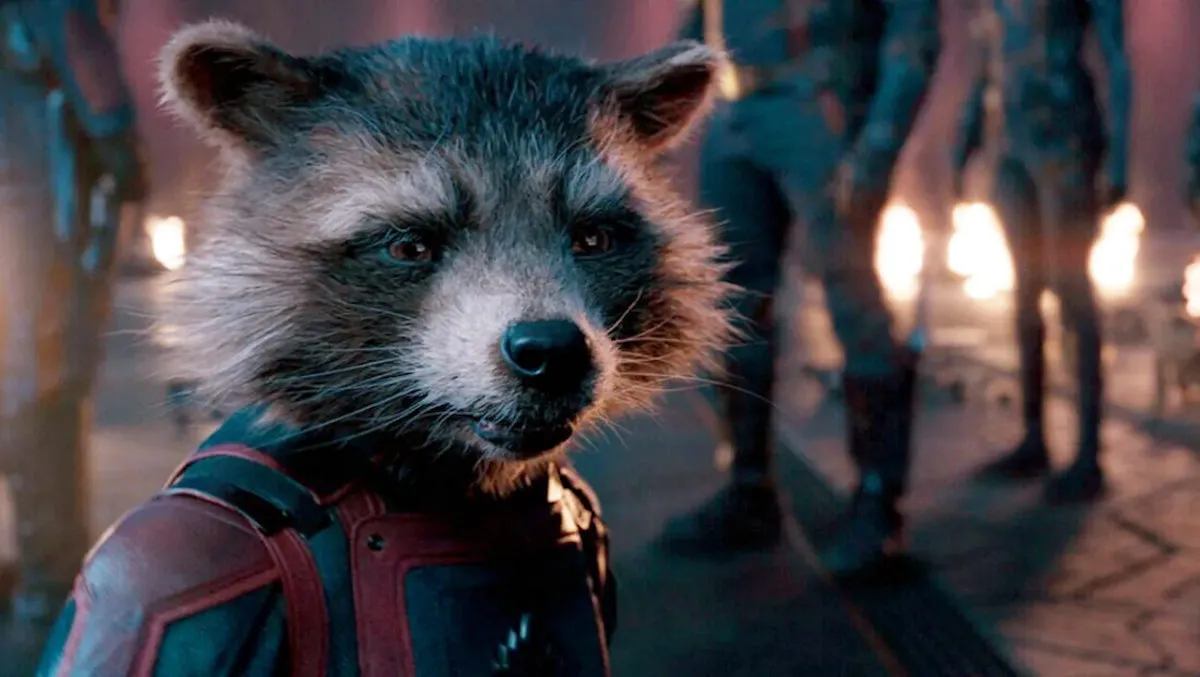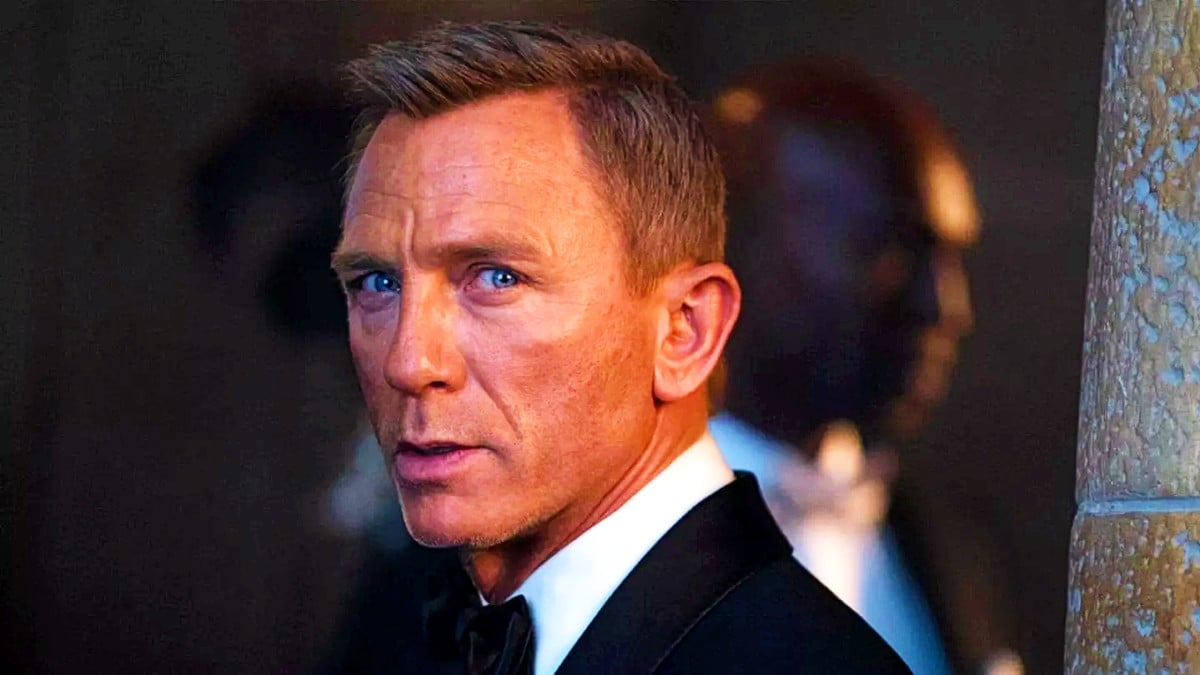Guardians of the Galaxy Vol. 3 is an epic, emotional journey for Rocket Raccoon and the rest of the Guardians. It’s also a visually gorgeous film, filled with weird and wonderful planets, landscapes, cities, and, uh, whatever the Orgocscope is.
We sat down with Beth Mickle, production designer for Guardians of the Galaxy Vol. 3, to talk about creating all those unforgettable settings—not to mention Rocket Raccoon’s pint-sized apartment.
Guardians of the Galaxy Vol. 3 is such a gigantic project, with so many environments. What was it like to work on something of that scale?
My background is in indie filmmaking, and so something like this, which is so much larger than life, was an absolute dream. It’s about trying to figure out what all the worlds in the film want to be, and how they can all be distinguished from each other, and how each can have its own feel, like the Orgoscope and Knowhere. I wanted to make sure that all those worlds feel big and filled out, otherworldly yet grounded, and all tell a fun story together. It’s a dream come true for a production designer.
When you talk about the Orgoscope, I also think about the costuming, especially when Nathan Fillion comes out in this amazing meat suit. How did you work with all the other designers in the film?

That was a fantastic collaboration between Legacy Effects, who helped design and build the costumes; Judianna Makovsky, our costume designer; and myself. The three of us would share concept art, and Legacy would figure out which elements felt the best. When it came to figuring out the finishes, we looked at flesh samples that I was doing for the set, to make sure it was all sort of in the same world. It was a fantastic collaboration, so I was really proud of that.
Was there anything that you were able to bring from your indie work into this film?
Absolutely. Even when you’re on a movie as big as a Marvel film, you still don’t have every dollar to do every single thing you want to do. So you have to be selective about which things are really going to matter on screen, what things are going to be really important. One of my tactics on smaller movies was page count—like how page count translates to screen time. So if it’s a quarter page in a script, it’s probably just going to be seen for a moment, but if there’s four pages of dialogue, then it’s probably going to be several minutes of a scene. Using my indie background helped me prioritize what actually needed the money and what could be a little bit cheaper and dirtier in the back. I feel like being able to bring that skillset is a healthy thing, even in a film as big as a Marvel film.
Is there anything you felt like you really fought for in the film?
The entire Orgoscope. That concept in general was definitely a brand new world for Marvel, and [director James Gunn] was such an amazing champion for it. He was really solid, and really stood by it. There were moments when it was understandably questioned, but I’ll never forget when, in a meeting, James said, “This is going to be one of the worlds that Marvel fans will talk about the most.”
There were many, many meetings about how far we could go with the Orgoscope. Even on the day of shooting, we were like, is it too gross? No, it’s just gross enough.
And it’s the world that most people are the most excited about when they speak with me about the movie. What I think everybody loves about it is that it’s like nothing that has ever been seen before. It takes awesome voices and directors like James to bring something wildly original to a screen with a mass audience, and take those chances, take those risks.
Just to skip to a radically different environment, tell me about Counter-Earth.
Counter-Earth was great. We wanted it to be an homage to Earth, drawing from the sixties, seventies, and eighties, and referencing that slightly off feel that things have when you go to foreign countries. We tried to make sure that it felt familiar from a distance, but very strange up close. We also made sure that all the decor and design details had an animal component built into them. So the wallpaper is small animals on swings, doing human things, and all the little figurines are little animals carrying baskets and collecting berries. All these little details made it a very fun, original world.
Are there any other details in the movie that fans should look out for?

If you squint when Adam Warlock comes racing through Rocket’s apartment, it’s just one or two quick shots—and you see it just a touch more in the Holiday Special—but it’s a really great glimpse at Rocket’s living space. We never saw it before in the other movies, and you can see all the fun little details that we felt make up his character, like all his little gadgets, all of his little mechanics. His bed is a miniature plane wing. Little things like that. We tried to show how he retrofitted human-scale things to fit his existence.
How about Knowhere? That world was expanded a lot in GotG3.
That was really fun. We were very lucky to have beautiful groundwork laid by Charles Wood, the production designer for Guardians of the Galaxy Vol. 1. It was a very vivid, very textural, rusted, layered world, and in Vol. 3, we got to go back and make an actual village out of it, where we get to see multiple eating outposts and restaurants and bars. All their apartments were actually built into the set.
And we got to explore how all those spaces related to each other. The set was the size of a football field, and we built up to five stories high. Movies hardly ever build sets that large, so it was really a privilege to be able to roll up our sleeves and do something that exciting. I must give a shout out to our amazing art director, Samantha Avila, who ushered the whole thing along and just did a beautiful job wrangling hundreds of workers to get it to the state that it was in. We’re really proud of that one.
Would you do a Marvel film again if you had the chance?
Absolutely. It’s been really wonderful to watch their staffing, their directors’ chairs, and their writers’ chairs being filled with more and more women. Half of our art department on Guardians was women, and it’s a much bigger, more colorful, more inclusive world that we’re all a part of.
(featured image: Walt Disney Studios Motion Pictures)










Published: Aug 1, 2023 06:04 pm